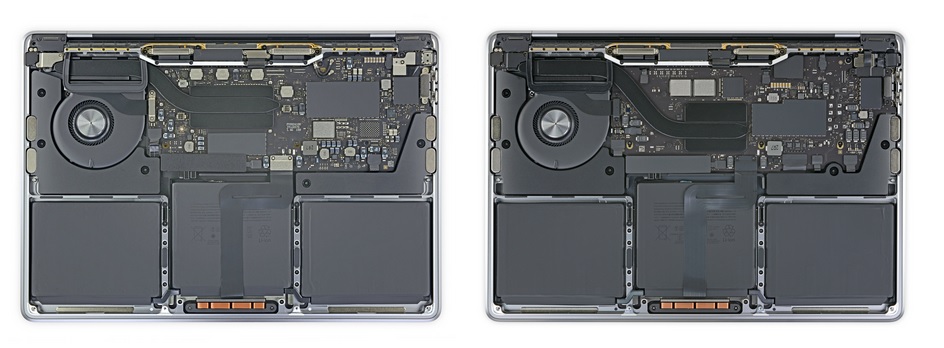
iFixit specialists finally got to the new MacBook Air and MacBook Pro 13 laptops, which became the first devices

</ img>
Find the differences
As it turns out, there are new devices insidealmost the same as their predecessors with Intel processors. But the MacBook Air still has some differences. First of all, this is the absence of a cooler, which was discussed at the presentation. But there is passive cooling - an aluminum heat spreader that removes heat from the hot part to the cold part. There are several advantages to this: passive cooling has no moving parts and results in less wear and tear. In addition, the laptop does not need to be cleaned of dust and debris that gets inside through the fan.

</ img>
Otherwise, the MacBook Air is identical to the previous model.

Left –MacBook Air with Intel processor, right – new MacBook Air
And the MacBook Pro 13 has even fewer differences, sincethe cooler was left in place. During tests, many noted that the laptop operates almost silently and rarely uses the fan. Therefore, there were suspicions that it had a different cooling system. It turned out that no - the cooler is exactly the same as its predecessor.

</ img>
In addition to changes to the motherboard, the copper heat pipe has a slightly different shape. And that is all.

Left –MacBook Pro 13 with Intel processor, right – new MacBook Pro 13
In addition, both models no longer have a separate T2 security chip - it is built directly into the M1 system-on-chip.

</ img>
As a result, we can conclude that Applecould have changed the design of the new products, but did not. Apparently, using old “templates” with a new processor is both faster and cheaper than developing a new model.
</ p>